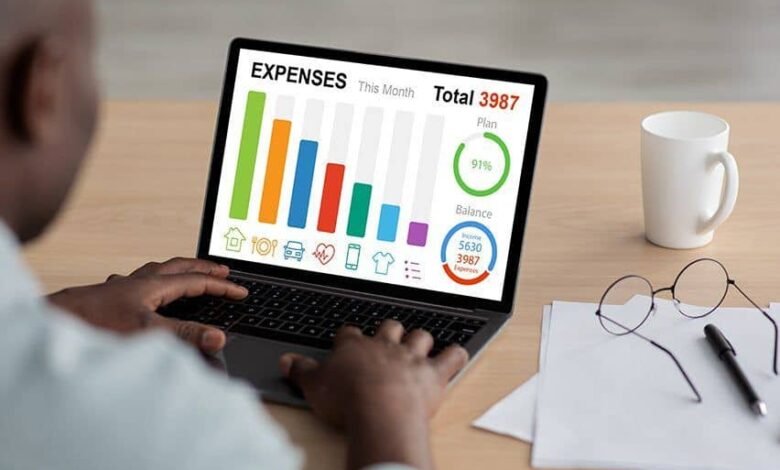Track It Like a Pro: The Best Software for Managing Business Expenses

When running a business, every dollar counts—and so does every minute. Managing expenses manually can be time-consuming and error-prone, leading to missed deductions, budget overruns, and headaches come tax season. Thankfully, there are powerful software tools designed to simplify expense tracking, automate reporting, and help you understand where your money’s going. Whether you’re a solopreneur or scaling quickly, here are some of the best options to take the guesswork out of expense management.
1. QuickBooks Online: The Gold Standard in Expense Tracking
QuickBooks Online remains a top choice for small businesses looking to keep their financial house in order. Beyond traditional accounting, QuickBooks offers powerful expense tracking that automatically pulls in data from linked bank accounts and credit cards. Receipts can be uploaded with a simple snap from your phone, and categories are automatically applied based on past spending behavior. One great tip: Use their “Rules” feature to automatically categorize recurring expenses like subscriptions or vendor payments—this helps you stay audit-ready with less manual input. You can also generate monthly reports to monitor spending trends and catch issues before they spiral.
See also: Factors Affecting XRP Price USD: A Deep Dive into Crypto Market Dynamics
2. Expensify: Streamlined Reimbursement and Receipt Scanning
For businesses with employees submitting expenses, Expensify is a game-changer. This cloud-based tool makes it easy to submit, approve, and reimburse expenses without spreadsheets or paper receipts. Employees can scan receipts using their phone, and the app uses smart OCR (optical character recognition) to extract and categorize data. Managers can set approval flows and spending limits to keep things under control. A unique benefit: Expensify can automatically match receipts to corporate card transactions, eliminating duplicate entries. Plus, with multi-currency support and direct deposit reimbursements, it’s ideal for global or remote teams looking to cut down on paperwork.
3. Zoho Expense: Feature-Rich and Cost-Effective
If you’re looking for a scalable solution that won’t break the bank, Zoho Expense delivers. It integrates seamlessly with Zoho Books and other Zoho apps but can also be used independently. You can create expense reports, enforce policies, and automate travel and mileage tracking—all in one dashboard. A smart feature: Zoho’s corporate card reconciliation, which allows you to import card statements and match expenses in bulk. The system flags duplicates and policy violations, saving your finance team serious time. For growing companies with multiple departments or clients, this tool offers visibility and control without a steep learning curve.
4. Xero: Ideal for Invoicing and Budget-Conscious Businesses
Xero is an intuitive accounting platform that excels at helping small businesses stay on top of expenses and invoices. Its clean dashboard and mobile app make it easy to enter expenses on the go, while bank feeds and reconciliations help ensure everything stays accurate and up-to-date. You can create tracking categories to separate expenses by project, client, or department—great for businesses juggling multiple revenue streams. A valuable tip: Xero integrates with many third-party apps, including payment processors and payroll systems, to expand its functionality even further. And because the platform is cloud-based, it supports real-time collaboration between business owners and accountants.
5. Divvy: Smart Cards + Real-Time Budgeting
Divvy offers something a little different: a powerful expense management platform paired with smart virtual and physical cards. Businesses issue cards to employees with pre-set budgets, ensuring spending never goes overboard. Every transaction is tracked in real-time, and receipts can be uploaded immediately through the app. The standout feature? Budgeting before you spend. You can allocate funds to different teams or events, and Divvy will notify you when limits are reached. There’s no need for reimbursements, since purchases happen within approved limits. This proactive approach is especially helpful for growing teams where traditional expense reports just don’t scale.
6. Wave: Free and Surprisingly Powerful
Wave is a standout option for freelancers and small business owners who need a capable tool without the price tag. It offers expense tracking, invoicing, and even payroll—completely free for its core features. You can connect your bank accounts, categorize expenses, and generate reports with just a few clicks. One hidden gem: the ability to set up recurring expenses for monthly bills or services, which streamlines bookkeeping. While it’s less robust than some premium tools, Wave is a strong starting point for entrepreneurs who want financial clarity without committing to a paid platform right away.
7. Adobe Express: Visualize Spending with a Free Online Infographic Maker
Once your expenses are under control, the next step is understanding how they support your overall business goals. Visual reporting can turn dry spreadsheets into insights you can actually use—and share with investors or partners. With the free online infographic maker from Adobe Express, you can turn your expense reports into clear, engaging visuals. This tool allows you to build graphs, pie charts, and other data-rich graphics without needing a design degree. Tip: Create a quarterly expense infographic to track marketing ROI, travel costs, or department spending—then share it in team meetings to promote transparency and smart decision-making.
Effective expense management isn’t just about staying organized—it’s about making better decisions for your business. Whether you’re reimbursing employees, monitoring project costs, or preparing for tax time, the right tools make all the difference. Start with one or two platforms that fit your business size and workflow, then layer in visualization tools to turn your numbers into insights. With the help of automation, smart cards, and design tools like Adobe Express, managing expenses can become less of a chore—and more of a strategy.





